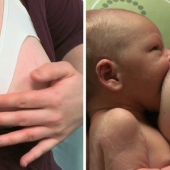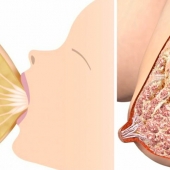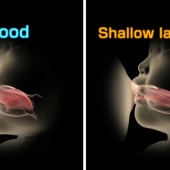Breast milk benefits a baby in many ways, providing the right balance of nutrients, helping to protect against illnesses and infections, and possibly helping with brain development. Many of your baby's physical characteristics are designed to help breastfeeding.
The mechanics of sucking require as much contact as possible between the baby's tongue and jawbone, and the mother's breast. To maximize contact, an infant's tongue is large in comparison to the size of the mouth and the cheeks contain fat to help keep the tongue in the proper position for sucking.
The same fat pads also ensure that the cheeks don't collapse while breastfeeding, which would reduce the size of the mouth and the negative pressure, required to get milk from the breast into the mouth. A newborn's upper airway - through which air enters and leaves the lungs - also supports breastfeeding.
A newborn's upper airway is very short. And the epiglottis - a flap of tissue at the base of the tongue that keeps food from going down the windpipe - touches the soft tissue at the back of the roof of the mouth.
This combination of physical traits helps direct milk to the esophagus, which carries it to the stomach, and reduces the risk of milk going down the windpipe. It also encourages the infant to extend the neck, which brings the lower jaw forward to maximize contact with the breast.
- 2815 views













